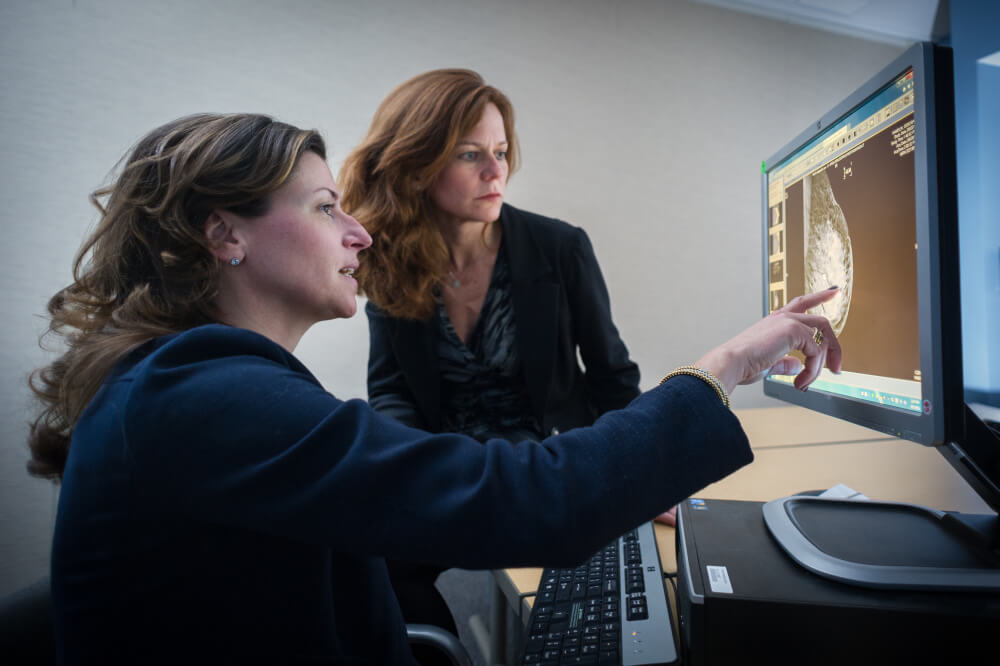After completing treatment for breast cancer, many patients may focus on their risk of recurrence. While this risk is individualized, there are certain factors your doctor may consider to determine whether you are at a higher or lower risk for the cancer returning.
“Each person’s breast cancer diagnosis is different, and includes unique factors that affect risk,” says Erica Mayer, MD, MPH, a breast oncologist in the Susan F. Smith Center for Women’s Cancers at Dana-Farber. “Therapies recommended for each patient can be quite different and individualized.”

‘Traditional’ risk factors
When considering the possibility of recurrence, doctors always pay attention to traditional risk factors. This includes:
- The size of the tumor
- Whether it has spread into nearby lymph nodes
- A patient’s age and general health
Some lifestyle choices, such as exercise and diet, have also been shown to affect the chance of recurrence.
Tumor subtype
Breast cancer is not one disease; it is made up of three main subtypes:
Within each of those subtypes there are further subtypes that behave in different ways, and doctors are continuing to research their complexity.
For patients whose breast cancers do not have any hormone receptors (hormone receptor-negative or triple-negative), the risk of recurrence may be somewhat higher in the first few years after treatment, however the risk may drop after five years of being cancer-free. If patients do experience another diagnosis, it may be a new cancer rather than the original breast cancer returning.
For patients with hormone-positive breast cancers, the risk of recurrence may be lower in the first few years after treatment, however this risk can persist for many years after initial treatment. This is why patients with hormone-positive breast cancers often continue with endocrine or hormonal therapy, such as tamoxifen or aromatase inhibitors, for up to ten years after initial treatment.
“It’s important to understand the variety of factors that influence risk, and how these differences impact treatment and follow-up care for breast cancer survivors,” says Mayer.
Learn more:
- Five Things Young Women with Breast Cancer Should Know
- What Is Hormone Therapy?
- I Have Metastatic Breast Cancer: What’s My Prognosis?
Oncotype testing
One of the more recent developments in cancer diagnosis and treatment is Oncotype testing, an assay performed for hormone-positive breast cancer that gives doctors the ability analyze cancerous tissue to learn more about the cancer’s “personality.”
“Oncotype testing provides two important pieces of information: an estimate of the risk of recurrence of the cancer, and a sense as to whether the cancer will be sensitive or not to chemotherapy,” says Mayer. “If there’s a cancer identified as not sensitive to chemotherapy, we certainly don’t want to expose the patient to chemotherapy if it isn’t going to help them.”
Oncotype testing has “dramatically reduced” the use of chemotherapy for patients with hormone receptor-positive breast cancer, Mayer says. Instead, most approaches focus on use of hormonal therapies.
“The next generation of this work is on the horizon,” Mayer adds. “It’s delving further into the tumor genomic profile and using that information to assign even more individualized therapy.”
Follow-up care
Follow-up care for breast cancer survivors is also an important factor and is very well established in national guidelines. In general, patients should be seen by a cancer provider at least twice a year to start, and then less frequently as time goes on.
Patients should pursue breast imaging if necessary, as well as routine preventative health care with their primary care doctor and/or gynecologist. A healthy diet and regular exercise are strongly encouraged.
Additional testing, including blood work or body scans, is not recommended in people who are feeling well and are without symptoms. Learn more about follow-up care for breast cancer survivors.
